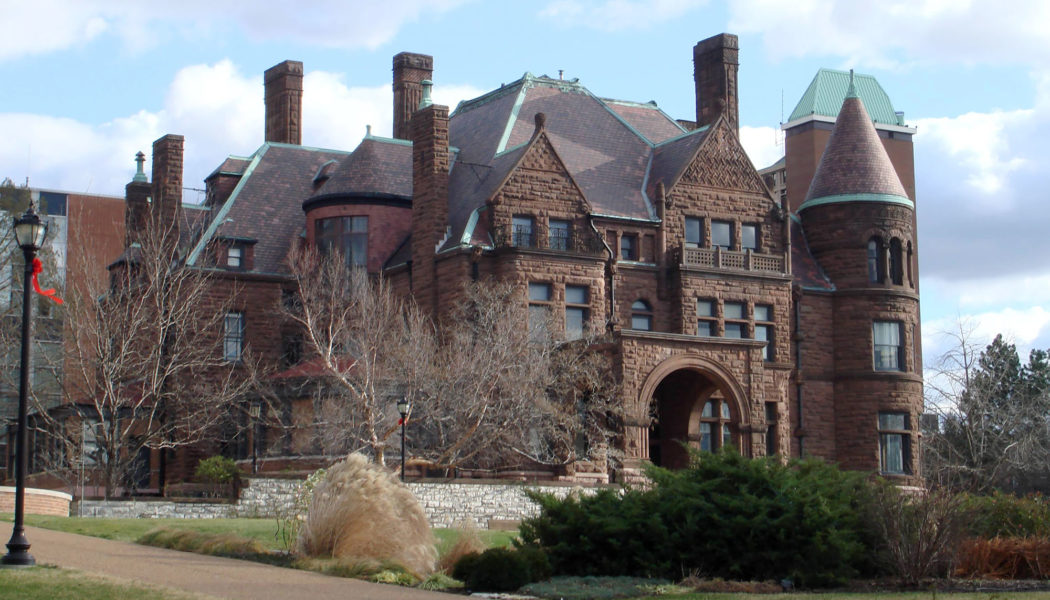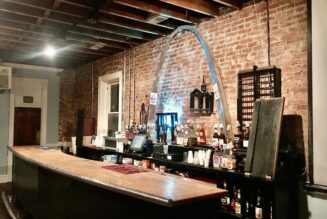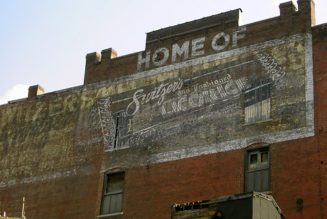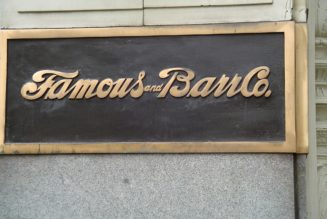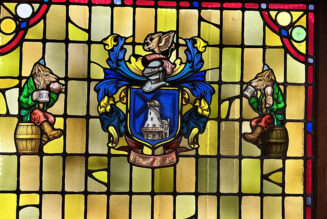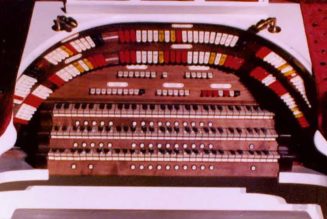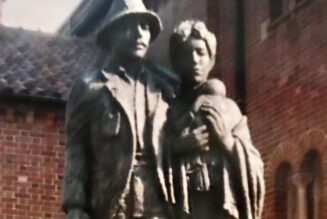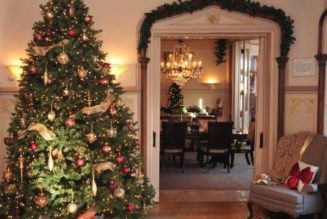by Carrie Paul
KonMari, better known as Marie Kondo, is the new expert organizer and her methods are shared everywhere from Pinterest to Netflix. I took it upon myself recently in lieu of spring cleaning and organizing to apply her “paper and sentimental organizational idea” to my closet and boxes of architectural photographs. I needed to re-examine: What did I want to keep, and what did I want to purge? And what brought me “joy” in the respect of those photos? While examining my CD’s of architectural photography from 2012, I came across some photos I had taken in Midtown Saint Louis of the former Pevely Building, circa 1915 (demolished 2017), and the Samuel Cupples Mansion.
Now, for those unfamiliar, the Pevely Building was acquired by Saint Louis University (SLU) around my time of photographing, and was located off Grand Avenue and Chouteau. I knew if I did not get photos of it then, it would soon be demolished to make way for their college campus expansion, so my purpose was to capture the Pevely Building before it was razed. But I also decided that day to head to the main campus to see a mansion I had read about but never seen.
At that time, I felt like a kid who received a box of Cracker Jacks once I figured out the sprawling campus. I didn’t care much for the popcorn, I just wanted to get the prize inside the box, so to speak. As far as the campus is concerned, it is one of the most elaborate and beautiful campuses in the Metro area with its sculptures, religious statues, gardens, winding paths, and the like; but I was there for something much, much grander. I wanted to photograph one of Saint Louis’s few Romanesque Revival-style mansions and that was my “prize” for the day: SLU’s hidden gem, her crown jewel. I did not however get to photograph the inside of the mansion that day, so the Kondo organization experiment reminds me of that. I went back to photograph the interior of the Samuel Cupples House this May.
Samuel Cupples was a self-made millionaire by the young age of thirty during the 19th Century. Born on September 13, 1831 to Irish parents, he lived in Pennsylvania until his teen years. Around age 15, the young and tenacious Samuel moved to Cincinnati and began an apprenticeship working in the woodenware business. He was eager, determined, and sharp-witted at that time and soon began traveling, promoting the products as a salesman. As time went on, Samuel felt Saint Louis’s location could provide a competitive business advantage due to the rivers it possessed, so he and his friend Asa Wallace moved to Saint Louis in 1851, calling the new branch of the business Samuel Cupples & Company.
In 1854, Samuel married Margaret Amelia Kells but tragedy struck soon afterwards, and Samuel and Margaret lost their only child in childbirth. Margaret died five years later from tuberculosis. Her sister Martha later married Samuel and the couple had three children, all of whom died young. As a result, in 1871, they adopted Martha’s niece Amelia.
The “Gilded Age” was in full swing by this time. After the Civil War many successful business enterprises and business ventures allowed capitalism to prosper, and fortunes, vast fortunes, were acquired. The term “rags to riches” certainly was appropriate and many “robber barons” such as Andrew Carnegie, John D. Rockefeller, and Jay Gould would make millions during this time. Henry Shaw and Samuel Cupples were among the many Saint Louisans able to capitalize on extraordinary wealth by being intuitive and using those instincts in business, and by using the new technologies of steel and railroads to suit their purpose of shipping their products nationwide. They became the city’s most beloved philanthropists.
Samuel Cupples later partnered with H.G. and Robert S. Brookings, along with A. A. Wallace. The company was enlarged and renamed Samuel Cupples Woodenware Company. Samuel bought land in downtown Saint Louis and built about 22 warehouses (Cupples Station) near a railroad line after the draining of Mill Creek, to aid in the transport of his goods (which at this time included woodenware, buckets, paper bags, envelopes, and rope). Samuel was a devout Methodist and gave thousands to the Methodist Orphan’s Children Home. Washington University was also a beneficiary of Cupples Station, engineering buildings, and many other donations Samuel made to them. Samuel also helped establish Barnes Hospital, and a library at the Methodist College in Fayette, Missouri. Samuel Cupples passed away in 1912 and is buried in Bellefontaine Cemetery.
The Samuel Cupples Mansion was constructed in 1888 at 3673 West Pine Boulevard, but today is only accessible by foot through the interior of SLU’s campus. In 1888, the area was a perfect one to offer relaxation, repose, and an escape from the pollution of downtown. Samuel and Martha loved horseback riding, so two years later, the property was also used to build stables, servants’ quarters, and a blacksmith shop, all interconnected via a tunnel system. In a style more commonly associated with Cathedrals or City Halls, Cupples chose his home to be modeled in the fashion called Romanesque Revival. The couple chose Thomas B. Annan from Saint Louis to build the property for a staggering sum of $500,000 in 1890. That would be millions in today’s currency. The house showcased Celtic designs to celebrate Cupples’ Anglo-Irish heritage. No expense was spared, as the exterior of the home has animals, dwarfs, and vines all carved with intricate detail. A rounded turret tower clad in copper also complements the exterior. Stained glass windows designed by the famous Louis Comfort Tiffany adorn the 42-room mansion. Eloquently carved fireplaces, twenty of them, ornament the home inside. In the year 1946, as Saint Louis University was expanding its campus, it purchased the home. It served as the Chouteau house at that time and operated more as a University office space and student center. In 1973, the house was almost demolished, but Father Maurice McNamee saved the house and oversaw all the renovation. In 1975 it was opened to the public, and the next year placed on the National Register of Historic Places.
I was in awe of just how amazing this house was when I saw it in person in 2012. When I went back this past May to explore in greater detail, I found myself in even greater awe than before. The interior is stunning and one of the most gorgeous examples in the nation of this type of architecture! The foyer has a unique pineapple stained glass window, the symbol for hospitality, and an Italian mosaic floor. The unique patterned designs, oak wood floors, pocket doors, and built-ins were custom-made throughout the house. Each room has its own unique character, but my two favorite rooms were the music parlor where the piano is and the library. According to testimony from Samuel’s granddaughter, Mrs. Boudinot Connor, the library was Samuel’s favorite room and reflected her grandfather’s love for literature. In this room, a Latin inscription is carved above a wooden mantel, which translates to, “The life of man without literature is death.”– courtesy SLU home tour brochure.
So, head out to SLU and see it for yourself! Today Cupples Mansion serves as a museum of art, antiques, and glassware, a little something for everyone. It is worth the visit and truly lives up to its reputation as SLU’s best-kept secret!
Samuel Cupples House
Hours of operation are 11 A.M.- 4 P.M, Tuesday through Saturday.
Works cited–
Carolyn Hewes Toft and Lynn Josse- St. Louis-Landmarks and Historic Districts
SLU- Samuel Cupples Tour Brochure
Cupples House
Photo images: Carrie Paul
